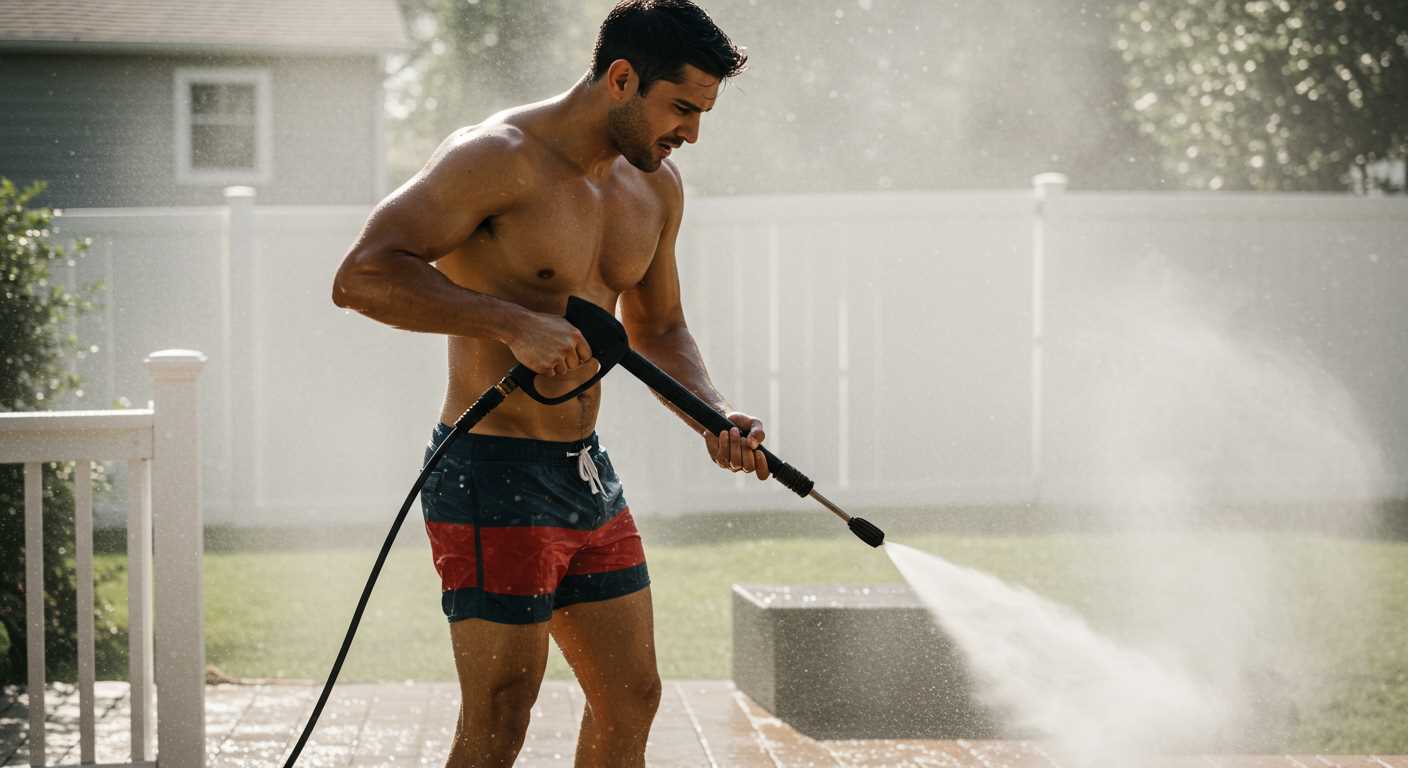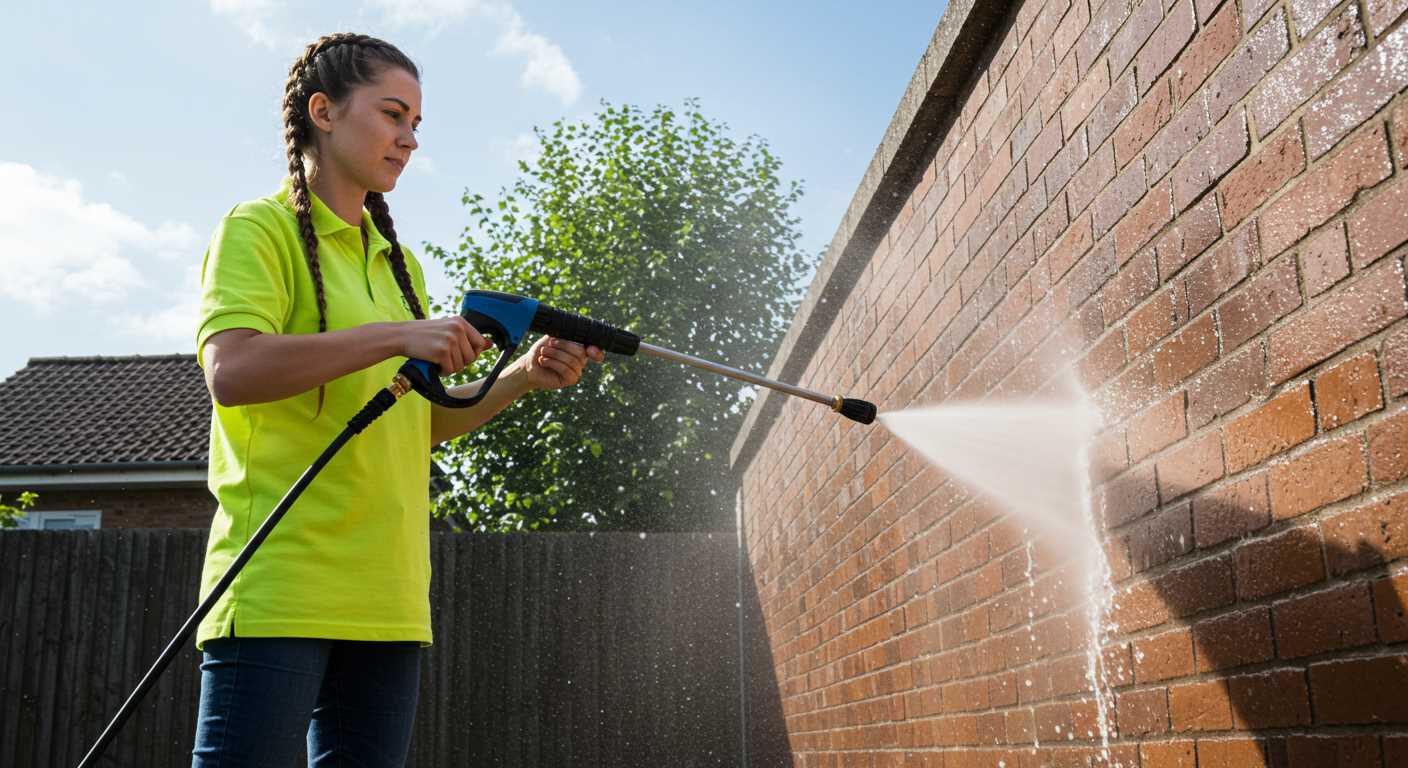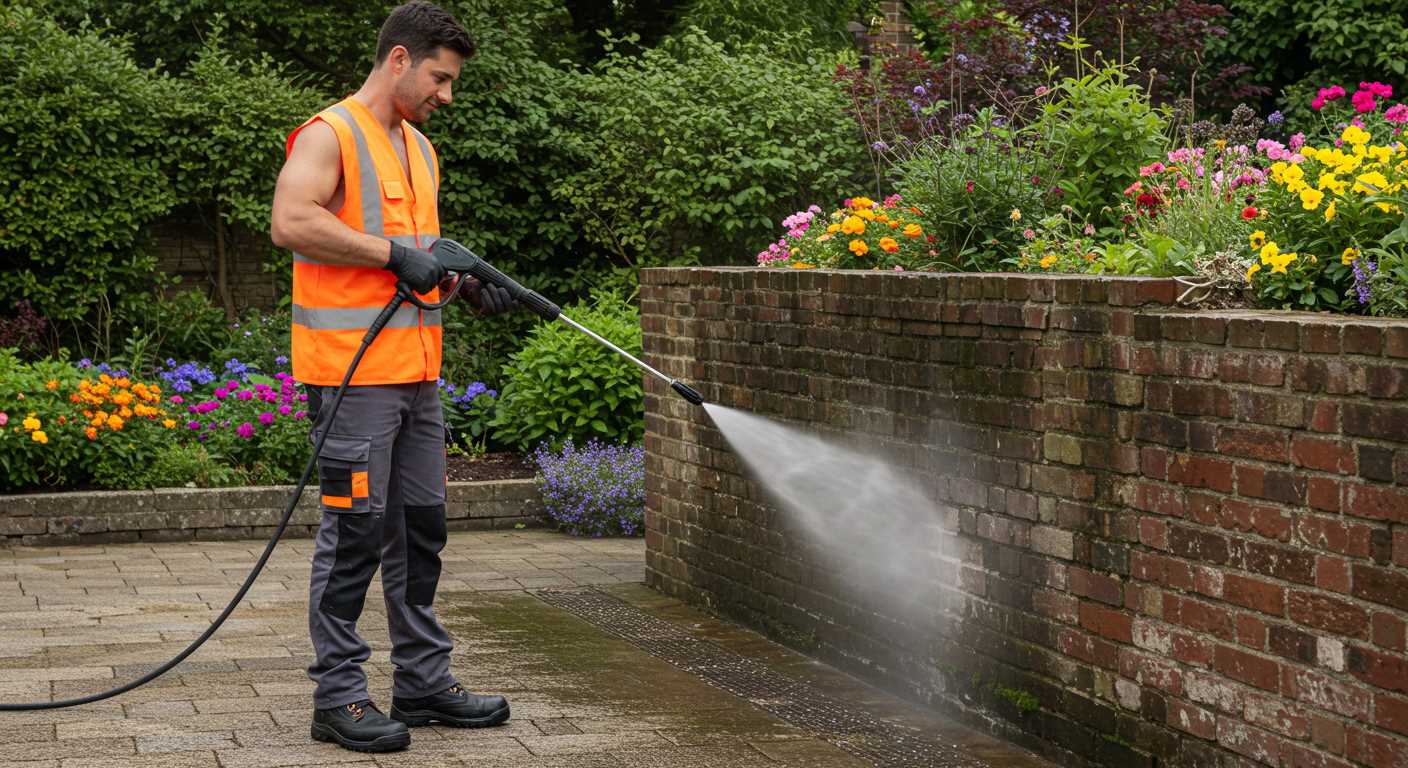




Begin with a thorough manual removal of debris. A sturdy rake is your best friend here. Not only does it help gather leaves, twigs, and other unwanted materials, but it also encourages you to take a closer look at the ground beneath. You might uncover hidden treasures or signs of trouble lurking in the soil.
Next, consider a combination of warm water and biodegradable soap for those stubborn stains on pathways or patios. A bucket and a stiff-bristled brush can work wonders. Once you’ve scrubbed the surface, rinsing with a hose will leave everything looking fresh. This method is labor-intensive, but the results are often worth the effort.
For grassy areas, a simple solution of vinegar diluted with water can tackle unwanted weeds. Spray this mixture directly onto the weeds, allowing nature to do its part. It’s an eco-friendly approach that avoids harsh chemicals while effectively managing unwanted plants.
Mulching is another beneficial practice. It not only improves soil health but also suppresses weed growth and retains moisture. Applying a layer of organic material, such as shredded bark or grass clippings, gives your outdoor space a neat appearance while nurturing the soil.
Finally, don’t underestimate the power of a good old-fashioned broom. Sweeping pathways and driveways will remove dirt and debris, enhancing the overall presentation of your outdoor space. Regular maintenance with these straightforward tools and techniques can keep your surroundings looking tidy and inviting.
Efficient Methods for Outdoor Space Maintenance
Start with a sturdy broom or rake. Sweeping away debris and leaves not only tidies up but also prevents decay and pest issues. Ensure you cover every nook and cranny; a thorough sweep can make a huge difference.
For stubborn stains on hard surfaces, a mixture of baking soda and vinegar works wonders. Apply the paste onto the affected area, let it sit for about 15 minutes, then scrub with a stiff-bristled brush. This combination breaks down grime effectively without harsh chemicals.
Utilising a Hose and Nozzle
A garden hose with a nozzle attachment provides adjustable water pressure. Use the highest setting for rinsing surfaces. Focus on areas with built-up dirt or stains, moving systematically to ensure no spot is missed. It’s a straightforward yet powerful approach.
Natural Cleaning Solutions
Consider eco-friendly options like lemon juice or diluted dish soap for general cleaning. These substances are not only safe for plants and pets but also effective in removing light stains and dirt. Mix a few drops with water in a spray bottle, apply, and scrub with a brush for best results.
Choosing the Right Cleaning Tools for Your Yard
Start with a sturdy broom. It’s perfect for sweeping away leaves, dirt, and debris. A good-quality broom can last for years, making it a worthwhile investment. I remember the time I bought an angle broom; it reached those tricky corners effortlessly, saving me time and frustration.
Rakes and Shovels
A rake is indispensable for gathering fallen leaves and grass clippings, while a shovel is ideal for removing stubborn soil or debris. Opt for a lightweight model with a comfortable grip. I once struggled with a heavy shovel that left my wrists sore after a day’s work. Switching to a lighter version transformed my experience, allowing me to finish the task without fatigue.
Garden Hose and Attachments
A garden hose paired with the right nozzle can be a powerful ally. Look for adjustable nozzles that offer varying spray patterns. I often use a concentrated jet for tough spots and a gentle mist for delicate plants. It’s amazing how versatile a simple hose can be. Ensure your hose is long enough to reach all areas of your outdoor space without needing to drag it around constantly.
Don’t overlook gloves. A good pair will protect your hands from cuts or blisters while providing a better grip on tools. I’ve learned the hard way that the right gloves can make a significant difference in comfort during long cleaning sessions.
Preparing Your Yard for Cleaning
Begin with a thorough assessment of your outdoor space. Identify areas that require attention, such as stubborn stains, debris, or unsightly organic matter. This step allows for a targeted approach rather than a scattergun method.
Next, clear the area of furniture, pots, or any other obstacles. This not only simplifies the task but also prevents any potential damage to your belongings. If you have plants or delicate flowers, consider covering them with tarps or cloths to shield them from any cleaning solutions or materials you might use.
Gather your tools and supplies in one place. Buckets, brushes, brooms, rakes, and any cleaning solutions should be on hand before you start. This saves time and ensures you won’t have to interrupt your work to hunt for forgotten items.
Choose a suitable day for your endeavour. Weather plays a significant role; it’s best to avoid windy or rainy days. Overcast conditions can be ideal, as direct sunlight might dry solutions too quickly, reducing their effectiveness.
Finally, consider safety precautions. Wear gloves to protect your hands from harsh chemicals and sturdy footwear to prevent slips. If you are using any ladders or tools that require elevation, ensure they are in good condition and stable before proceeding.
Using a Garden Hose for Basic Cleaning
A garden hose can be a surprisingly effective tool for tidying up outdoor spaces. Here are some practical tips to maximise its utility:
- Adjustable Nozzle: Invest in a nozzle with multiple settings. This allows you to switch from a gentle spray for delicate plants to a powerful jet for tougher tasks.
- Spray Timing: Start by spraying the surface to loosen dirt and debris. Let the water sit for a minute before scrubbing to enhance the results.
- Detergents: Mix a mild detergent in a bucket of water. Use a sponge or cloth to apply it to stubborn spots and rinse with your hose afterwards.
- Garden Hose Reel: Keep your hose organised and tangle-free. This makes it easier to manoeuvre around your space and access various areas.
In my experience, treating surfaces with care is vital. Over time, I’ve learned that a steady hand and the right angle can make a significant difference. A direct spray at an angle helps dislodge dirt without causing damage.
For larger areas, consider using a sweeping motion. This helps cover more ground efficiently. Always check for any hidden items that might get displaced before you start spraying.
- Regular Maintenance: Set a schedule for periodic cleaning. This prevents build-up, making future tasks less daunting.
- Water Source: Ensure your water source is adequate. Low pressure can hinder your efforts; if needed, check for kinks in the hose.
Lastly, don’t underestimate the power of teamwork. If you have a friend or family member, coordinate efforts. One can focus on spraying while the other tackles scrubbing or picking up debris.
Removing Debris with Rakes and Brooms
For tackling leaves, twigs, and other unwanted materials in your outdoor space, rakes and brooms are your best allies. Choose a rake with sturdy tines for collecting leaves effectively. A wide rake allows you to gather more debris in a single sweep, saving time and effort. Make sure to rake in sections, which helps avoid overwhelming piles that can be more challenging to manage.
Using a broom is ideal for patios and pathways. Opt for a broom with stiff bristles to dislodge dirt and small particles. Start at one end of the area and work your way systematically to the other side. This ensures you cover every inch without leaving any spots behind. A dustpan can help collect the debris easily, making the entire process more streamlined.
For larger areas, a landscape rake can speed up the process. It’s perfect for clearing away heavy debris, such as branches and larger leaves. This tool allows for more efficient removal and can handle tougher tasks that standard rakes might struggle with.
When using these tools, consider the wind direction. Raking against the wind can make the task more laborious as debris may scatter back towards you. Working with the wind ensures that you spend less time chasing after loose materials.
For stubborn dirt or moss on hard surfaces, a stiff broom can be particularly effective. Use short, firm strokes to loosen the grime, then sweep it away. If necessary, combine this method with a garden hose for additional assistance in removing any remaining residue.
Regular maintenance of your tools is also crucial. Keep the tines of your rake clean and free from debris to ensure they remain effective. A quick wash after use will prolong their lifespan and improve performance.
Utilising Soapy Water for Stubborn Stains
For particularly tough marks, soapy water can be a game changer. Mix a few drops of dish soap with warm water in a bucket. Apply this solution directly onto the stained surface using a sponge or cloth. Let it sit for about 10-15 minutes to allow the soap to penetrate the grime.
After soaking, scrub the area with a stiff-bristled brush. This method is especially effective on concrete and stone, where dirt accumulates in crevices. For larger areas, you can use a broom to spread the soapy water evenly, ensuring every corner is treated.
Rinse the surface thoroughly with a garden hose to remove soap residue. If certain spots remain stubborn, repeat the process until satisfied. This technique is not only effective but also environmentally friendly, as it avoids harsh chemicals.
For additional cleaning power, consider using an air compressor, like the best air compressor for computer cleaning, to blow away any loose debris or dirt after washing. This combination can significantly enhance your efforts, leaving surfaces looking refreshed.
Implementing Manual Scrubbing Techniques
For tackling tougher grime and stains, employing manual scrubbing methods can be highly rewarding. I recall a time when I had to deal with years of accumulated moss on a patio. Armed with a sturdy scrub brush and a bucket of warm, soapy water, I made significant progress without any mechanical assistance.
Choosing the Right Brush
Selecting the appropriate brush is critical. A stiff-bristled brush works well for concrete surfaces, while a softer brush is ideal for delicate materials like wood or composite decking. I’ve found that a long-handled brush helps reach corners and edges effectively, reducing strain on my back.
Scrubbing Technique
Start from one corner and work methodically across the area to ensure thorough coverage. Use a circular motion for stubborn patches, applying a bit of elbow grease where necessary. Rinse frequently to prevent soap residue buildup, which can attract more dirt later. A friend once suggested using a broom for larger areas–this technique actually helped cover ground faster, particularly on flat surfaces.
| Surface Type | Recommended Brush | Technique |
|---|---|---|
| Concrete | Stiff-bristled | Circular motion, rinse often |
| Wood | Soft-bristled | Gentle scrubbing, avoid excessive pressure |
| Composite Decking | Medium-bristled | Long strokes, follow the grain |
| Patios | Stiff-bristled or broom | Start in one corner, work methodically |
After scrubbing, using a garden hose to rinse the area will help reveal the results of your hard work. I’ve always found that a little persistence goes a long way in achieving a pristine finish.
Clearing Leaves and Organic Matter Efficiently
To tackle fallen leaves and organic debris effectively, begin with a high-quality rake. Choose a rake with a wide head for larger areas, allowing you to gather more material in fewer sweeps. For tighter spots, a leaf blower can speed up the process, pushing leaves into manageable piles.
Manual Techniques for Quick Collection
Once you’ve amassed a pile, use a tarp to gather the organic matter. Lay the tarp flat beside the pile, then tilt the rake to slide the debris onto it. This method reduces the need for multiple trips to your compost bin or waste disposal site. If you prefer a more hands-on approach, grab a sturdy pair of gloves and gather leaves by hand, especially in flower beds where raking might disturb delicate plants.
Dealing with Stubborn Residue
For sticky organic matter or mud, sprinkle a bit of dry soil or sawdust on the area to absorb moisture, making it easier to remove. If you encounter particularly stubborn stains, utilising a bit of car wash soap for pressure washers can help loosen tough spots when mixed with water in a bucket. This blend can be applied with a brush or cloth to lift the residue before rinsing with a hose.
Cleaning Outdoor Furniture
To refresh outdoor seating and tables, gather a bucket, sponge, and a gentle detergent. Mix warm water with a few drops of the detergent in the bucket. Start with a soft sponge; it prevents scratching surfaces while effectively removing dirt.
For wooden furniture, ensure you use a cleaner specifically formulated for wood. Apply the mixture with a soft cloth or sponge, and follow with a rinse using a hose. Avoid soaking the furniture; just a light mist will suffice to remove any soap residue.
For metal and plastic pieces, a mixture of vinegar and water can be quite effective. Combine equal parts and use a cloth to wipe down the surfaces, focusing on areas with stubborn grime. Rinse well with water to prevent any vinegar residue from dulling the finish.
Don’t overlook the cushions and fabrics. If they’re removable, take them off and check the care labels. Most can be cleaned with a mixture of mild soap and water. Use a soft brush to gently scrub away any stains, then rinse thoroughly and allow them to air dry completely before putting them back.
For those hard-to-reach spots, a toothbrush or a small scrub brush can be handy. This is particularly useful for intricate designs or tight corners. Just apply your cleaning solution and scrub gently to dislodge any dirt or mildew.
Lastly, consider applying a protective spray for wooden surfaces after cleaning. This helps maintain the finish and provides an extra layer against the elements. Regular upkeep will make the next clean-up much easier and keep your outdoor furniture looking its best.
Maintaining a Regular Cleaning Schedule
Establishing a consistent routine is pivotal for keeping your outdoor space tidy. Here’s a straightforward approach to set up a cleaning schedule that works for you:
- Weekly Tasks:
- Clear fallen leaves and twigs.
- Check for any litter or debris that may have accumulated.
- Wipe down furniture and fixtures to prevent dirt build-up.
- Monthly Tasks:
- Deep clean paths and patios using soapy water and a stiff brush.
- Inspect and tidy garden beds, removing weeds and dead plants.
- Organise tools and equipment, ensuring everything is in good condition.
- Seasonal Tasks:
- Prepare your space for winter by covering plants and securing items.
- In spring, focus on rejuvenating the area with fresh mulch and planting new flowers.
- Summer requires regular attention to watering and upkeep of grass and plants.
Using a calendar or planner can help keep track of these tasks. I’ve found that setting reminders on my phone is beneficial for remembering those monthly and seasonal chores. Consistency is key; over time, these efforts will create a more pleasant outdoor environment, making maintenance feel less overwhelming.
Another tip is to pair cleaning tasks with other activities. For instance, while children play outside, take the opportunity to tidy up or while waiting for dinner to cook, check for debris. This way, the workload becomes more manageable.








.jpg)


